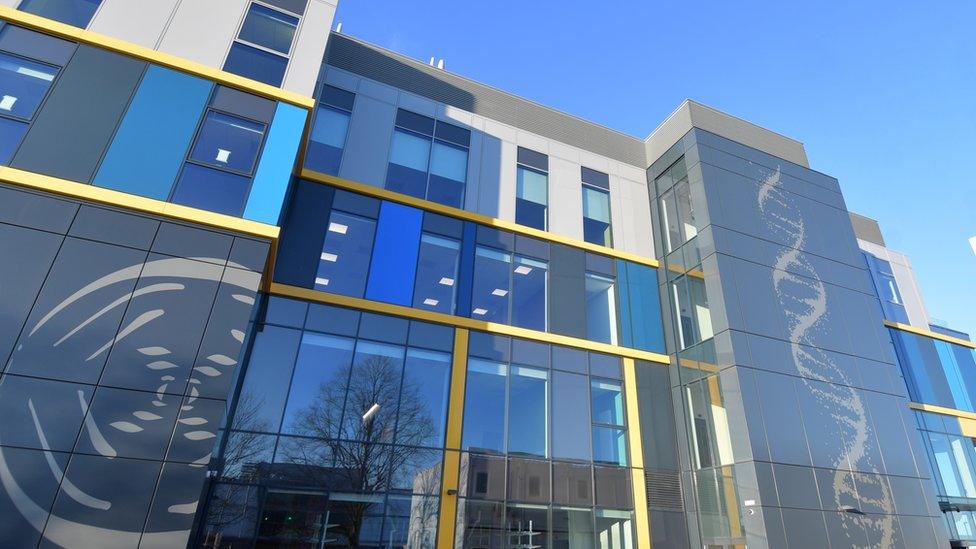World War Two experimental catapult unearthed by archaeologists
- Published
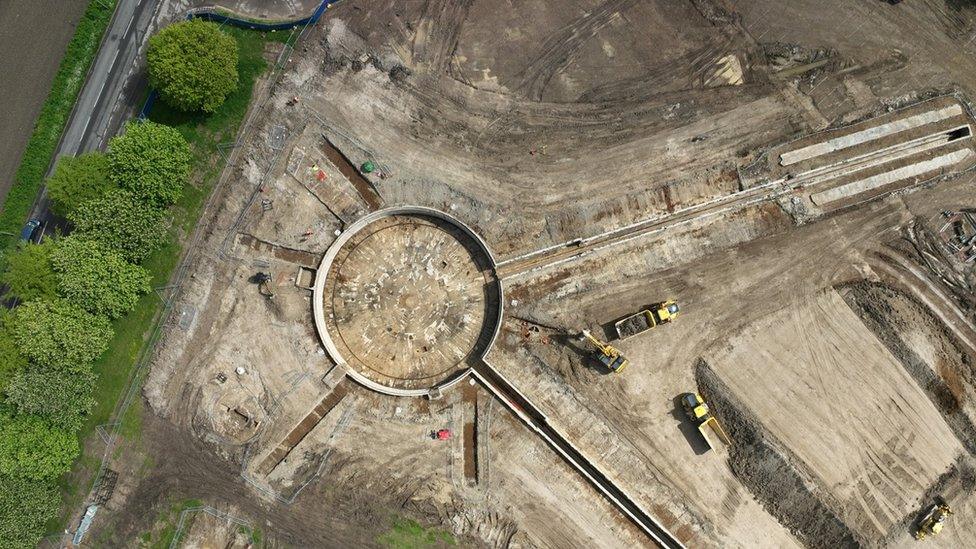
The prototype catapult was unearthed at the site of a Harwell Science and Innovation Campus development
An experimental catapult designed to launch World War Two bomber planes into the sky has been excavated.
The prototype Royal Aircraft Establishment Mark III Catapult was unearthed at the site of a development at the Harwell Science and Innovation Campus in Oxfordshire.
It was made to enable take-offs using shorter runways and so the planes could be loaded with more fuel.
The contraption was built between 1938 and 1940 when the site was RAF Harwell.
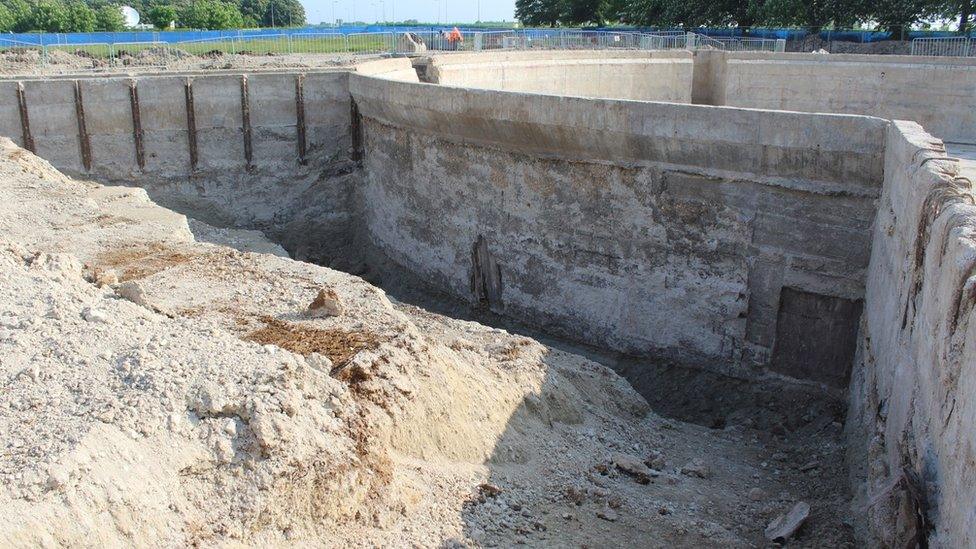
The structure was filled in and by 1941 a normal runway was built across part of it
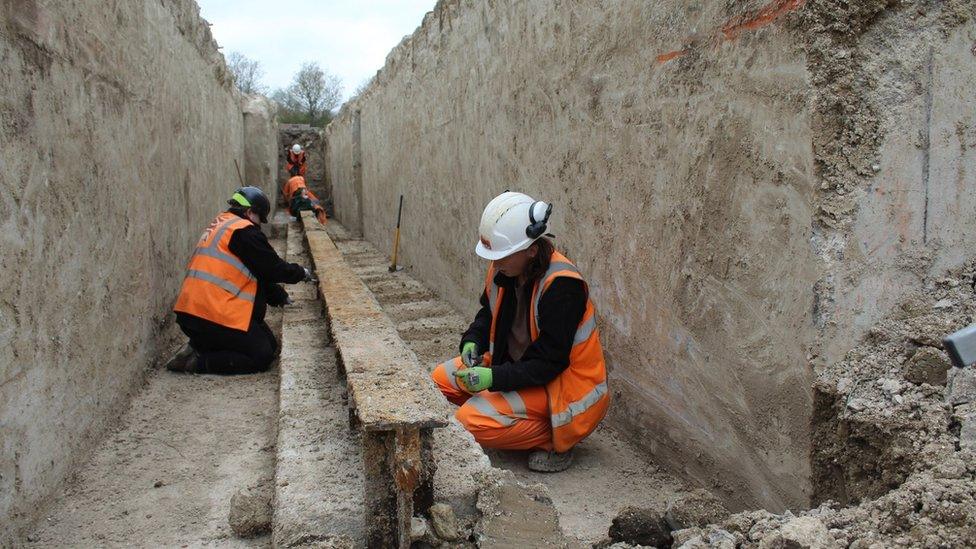
Archaeologists have been excavating the catapult's arms
However, the project was abandoned without ever launching an aircraft, because the engines would wear out and the design did not properly fit the bomber planes.
The mechanism was taken out and a normal runway built over the top.
The technology was a precursor to Catapult Armed Merchant (CAM) ships, which launched Hawker Hurricanes at sea, external via rocket-propelled catapults.

How was the catapult meant to work?
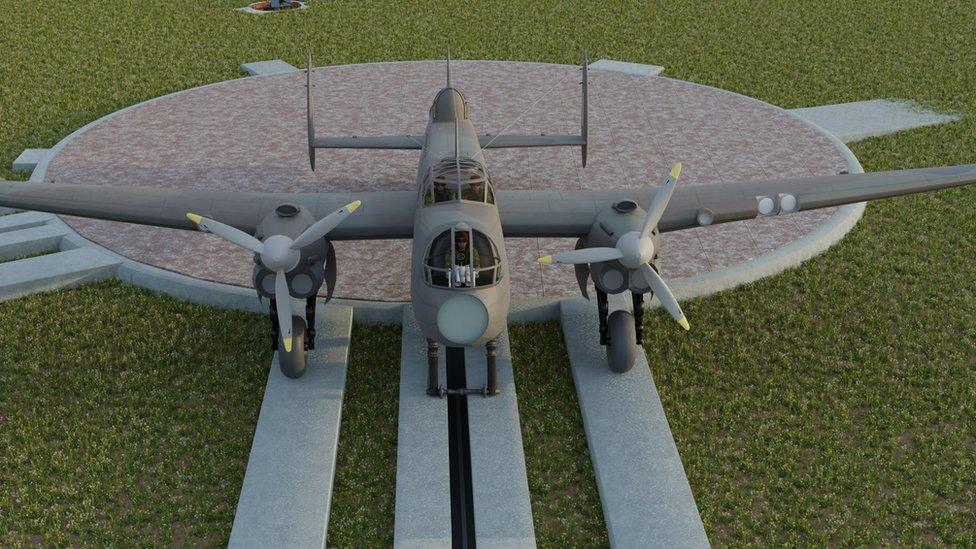
A turntable directed the planes to one of two short runways
A large rotating turntable directed aircraft towards one of two concrete track runways only 82m (269ft) long
The aircraft was attached to an underground pneumatic ram using a towing hook
Underneath the turntable Rolls-Royce Kestrel aero engines compressed air to 2,000 psi to drive the ram
High-pressured air was forced into the pneumatic ram, which rapidly expanded to the length of the guided track
The bomber would then be catapulted into the sky
Source: MOLA, external
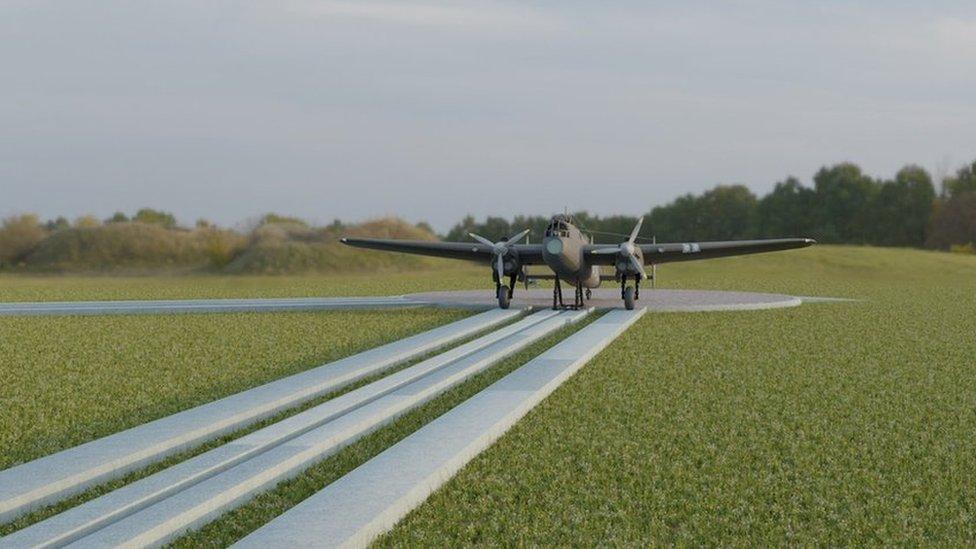
The project was abandoned without ever launching an aircraft

Archaeologists at the Museum of London Archaeology (MOLA) have now recreated a 3D digital replica of the remains.
Project officer Susan Porter said: "This fascinating structure reminds us of the rapid experimentation and innovation of the interwar years and World War Two.
"Crucially, recording the location and appearance of every inch means that the catapult is preserved by record for future generations."
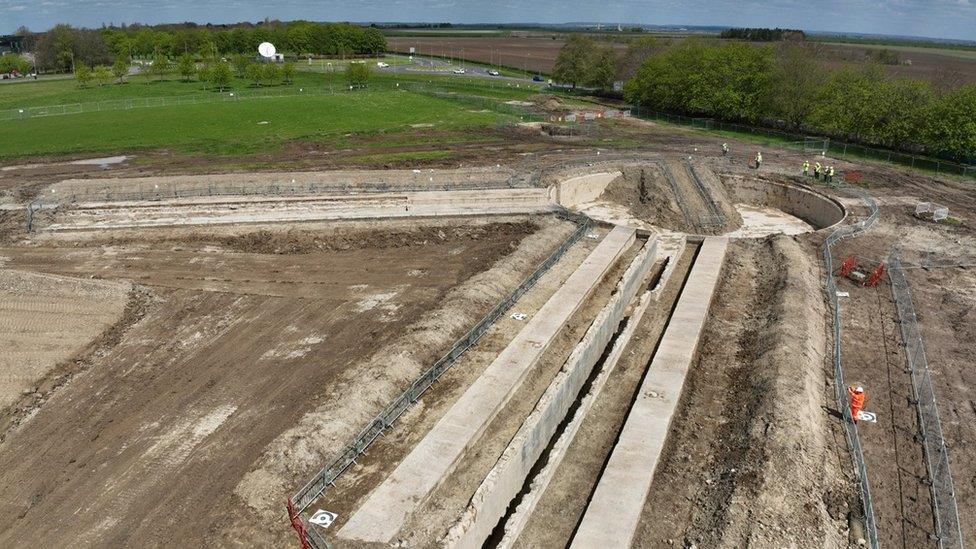
The catapult has now been dismantled to allow construction works in the area to continue
The catapult has now been dismantled to allow construction works in the area to continue, though the remains are being archived.
Excavations also uncovered large lights from another nearby runway, and a light anti-aircraft gun emplacement used to defend it from attack.

Follow BBC South on Facebook, external, X, external, or Instagram, external. Send your story ideas to south.newsonline@bbc.co.uk.
Related topics
- Published5 March 2023

- Published30 November 2021
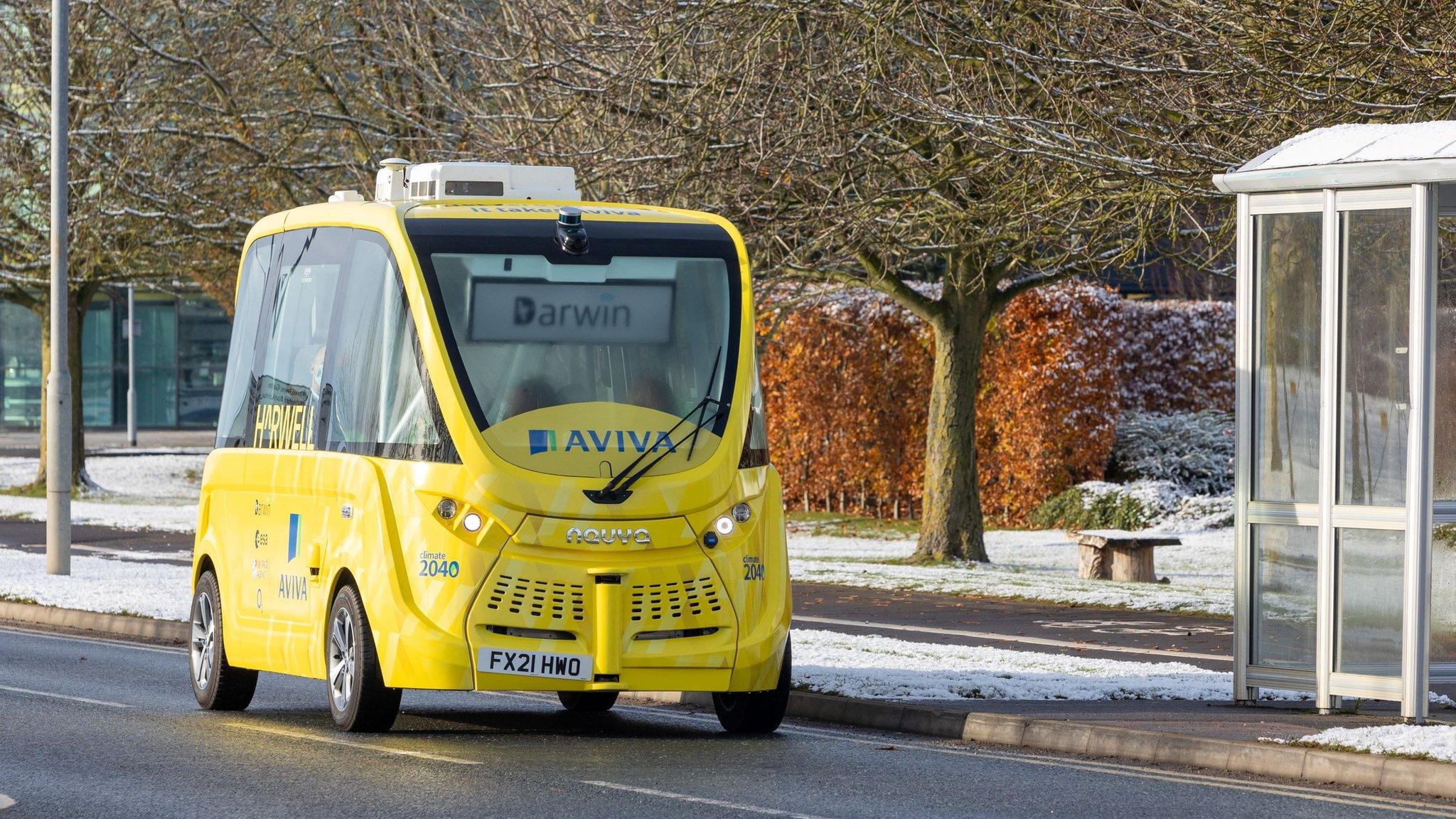
- Published30 September 2021
